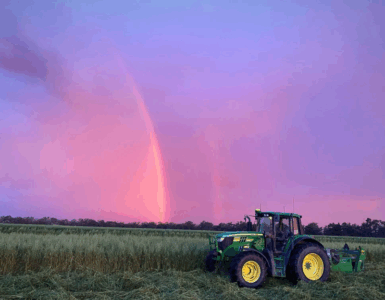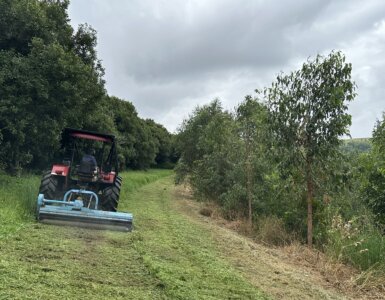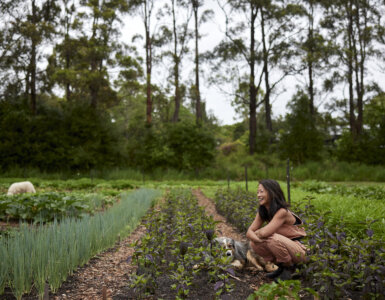Undoolya is the oldest cattle station in the Northern Territory, first founded in 1872.
The history is not lost on current custodians the Hayes family, who took over the pastoral lease in 1906.
But as the dust rises behind a mob of cattle being gently walked in, quad bikes whirring at the rear, ready to truck them south to market, the focus is firmly on the future for the family cattle enterprise.
Baby Hudson, the latest addition to the family, is settling into life on the station, and family matriarch Nicole Hayes says there is plenty to be excited about for the future.
“Now that we’ve got four grandchildren, I suppose you think even more about the next generations coming through and it is exciting. It’s a time when there’s so much research being done to make things better for the cattle industry.
There’s a lot of money being spent and work being done to make sure that livestock are well looked after and we’re putting out a great product.”

A haven in the Territory
The Undoolya homestead is 13 kilometres east of Alice Springs, on the property which spans 144,000 hectares across the rocky McDonnell Ranges to the north, to the flood plains along the Tod River and Emily and Jessie Creek systems.
Ben and Nicole Hayes, who have four daughters and a son, run about 5,000-head of Poll Hereford cattle, depending on the season.
The first to introduce the Poll Hereford breed to Central Australia in the 1940s, it is another reflection of the Hayes family’s pioneering approach to Northern Territory agriculture.
Across the station, buffel grass is starting to shoot, feed is aplenty following some timely winter rain, and Nicole reflects on the past that has brought them to where they are today.
“Ben’s family came up here in 1884, they were doing the Overland Telegraph line, replacing the poles with steel oppenheimers because the white ants had eaten the wooden poles,” Nicole said.
“So the Hayes family have been in the area for a very long time and worked around the place until they bought a property to the south of us and then purchased more land to the west.
“In 1906, William and Mary Hayes purchased Undoolya and the family have been here ever since.”

Caring for the herd
“The main focus has always been cattle, but in the early days they used to also breed horses to be used as remounts back in the war, and there were also goats and sheep were also brought onto the property as well.”
Life runs at a fairly calm pace most of the time at Undoolya, a far cry from the adrenalin-pumping action some of us might picture thanks to outback docuseries on our television screens.
Aside from some occasional heli-mustering out in the Ranges country, Nicole said the pace might seem a little sedate, but it was just how the family liked it.
From prime cattle country, the Hayes family remain immensely proud of their quality stock, which are mainly processed in Australia and end up on Australian and international supermarket shelves.
Nicole says we should not let their final destination fool us into thinking they do not care about their stock, it is by far the opposite.
“Sometimes people think that we don’t care about how the animal is raised,” she said.
“At some point we do have to shut off a little when we load them up to truck them for slaughter and not think about that side of it, but when they’re in our hands we want to make sure they have the best sort of life that we can give them.
When they’re in our hands we want to make sure they have the best sort of life that we can give them.”
“And when you think about some of the biosecurity risks, it does scare us a bit that if foot and mouth or lumpy skin (disease) got into Australia it would threaten our industry and we would have to destroy our herd.
“Ben’s family have spent generations growing the herd to where it is now, and the thought that we’d have to put them all down is heartbreaking, it would be extremely hard and it’s something we hope we never see.
“It is hard to explain the connection (farmers) have with their stock, but they mean a lot to us.”

The changing face of modern cattle production
While the handling of the cattle is one thing that has not changed across the generations at Undoolya, the paperwork has, on industry and consumer demand.
However, if it means the meat can be traced right back to Undoolya, the family is proud of what they are producing and always striving to improve.
“When we load a truck now it probably takes longer to fill out the paperwork than it does to load the cattle,” Nicole said.
“It’s quite a process just to make sure there’s traceability, but what hasn’t changed is that we’re still trying to produce a quality product and always pushing for more information so we can achieve that.”







































Great read about an iconic, family owned, Australian Station.